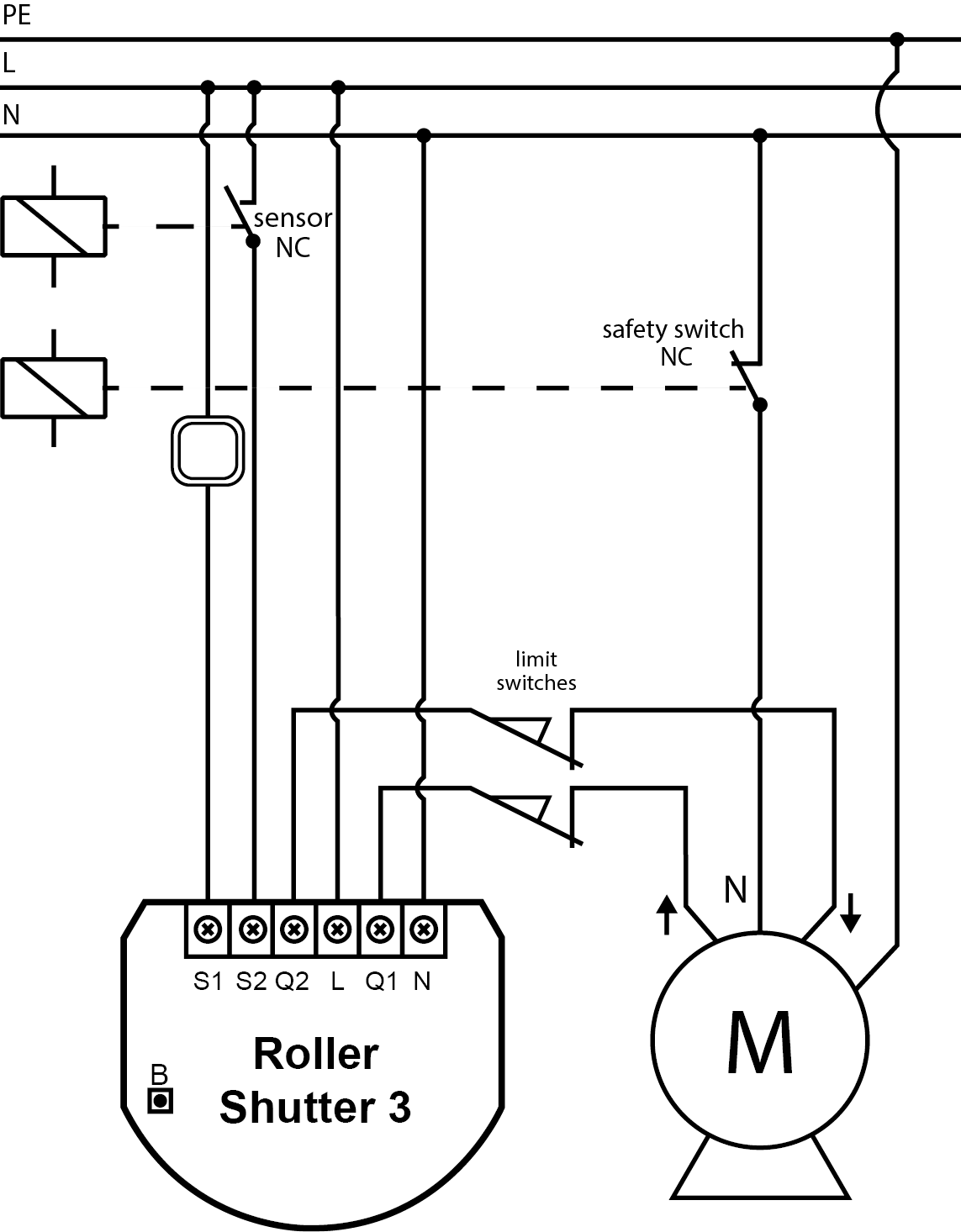Parameter 20: Switch type
This parameter defines as what type the device should treat the switch connected to the S1 and S2 terminals.
This parameter is not relevant in gate operating modes (parameter 151 set to 3 or 4). In this case switch always works as a momentary and has to be connected to S1 terminal.
Size: 1 Byte, Default Value: 2
| Setting |
Description |
| 0 |
momentary switches |
| 1 |
toggle switches |
| 2 |
single, momentary switch (the switch should be connected to S1 terminal) |
Parameter 24: Inputs orientation
This parameter allows reversing the operation of switches connected to S1 and S2 without changing the wiring.
Size: 1 Byte, Default Value: 0
| Setting |
Description |
| 0 |
default (S1 1st channel, S2 2nd channel) |
| 1 |
reversed (S1 2nd channel, S2 1st channel) |
Parameter 25: Outputs orientation
This parameter allows reversing the operation of Q1 and Q2 without changing the wiring (in case of invalid motor connection) to ensure proper operation.
Size: 1 Byte, Default Value: 0
| Setting |
Description |
| 0 |
default (Q1 1st channel, Q2 2nd channel) |
| 1 |
reversed (Q1 2nd channel, Q2 1st channel) |
Parameter 30: Alarm configuration - 1st slot
This parameter determines to which alarm frames and how the device should react. The parameters consist of 4 bytes, three most significant bytes are set according to the official Z-Wave protocol specification.
For a setting of this parameter, please refer to the manufacturers manual.
Size: 4 Byte, Default Value: 0
Parameter 31: Alarm configuration - 2nd slot (Water)
This parameter determines to which alarm frames and how the device should react. The parameters consist of 4 bytes, three most significant bytes are set according to the official Z-Wave protocol specification.
For a setting of this parameter, please refer to the manufacturers manual.
Size: 4 Byte, Default Value:
Parameter 32: Alarm configuration - 3rd slot (Smoke)
This parameter determines to which alarm frames and how the device should react. The parameters consist of 4 bytes, three most significant bytes are set according to the official Z-Wave protocol specification.
For a setting of this parameter, please refer to the manufacturers manual.
Size: 4 Byte, Default Value:
Parameter 33: Alarm configuration - 4th slot (CO)
This parameter determines to which alarm frames and how the device should react. The parameters consist of 4 bytes, three most significant bytes are set according to the official Z-Wave protocol specification.For a setting of this parameter, please refer to the manufacturers manual.
For a setting of this parameter, please refer to the manufacturers manual.
Size: 4 Byte, Default Value:
Parameter 35: Alarm configuration - 5th slot (Heat)
This parameter determines to which alarm frames and how the device should react. The parameters consist of 4 bytes, three most significant bytes are set according to the official Z-Wave protocol specification.
Size: 4 Byte, Default Value:
Parameter 40: S1 switch - scenes sent
This parameter determines which actions result in sending scene IDs assigned to them.
Size: 1 Byte, Default Value: 0
| Setting |
Description |
| 1 |
Key pressed 1 time |
| 2 |
Key pressed 2 times |
| 4 |
Key pressed 3 times |
| 8 |
Key hold down and key released |
| 15 |
All |
Parameter 42: S2 switch - scenes sent
This parameter determines which actions result in sending scene IDs assigned to them.
Size: 1 Byte, Default Value: 0
| Setting |
Description |
| 1 |
Key pressed 1 time |
| 2 |
Key pressed 2 times |
| 4 |
Key pressed 3 times |
| 8 |
Key hold down and key released |
| 15 |
All |
Parameter 60: Measuring power consumed by the device itself
This parameter determines whether the power metering should include the amount of active power consumed by the device itself.
Size: 1 Byte, Default Value: 0
| Setting |
Description |
| 0 |
function inactive |
| 1 |
function active |
Parameter 61: Power reports - on change
This parameter determines the minimum change in consumed power that will result in sending new power report to the main controller.
For loads under 50W, the parameter is not relevant and reports are sent every 5W change.
Power reports are sent no often than every 30 seconds.
Size: 2 Byte, Default Value: 15
| Setting |
Description |
| 0 |
reports are disabled |
| 1 - 500 |
change in power in % |
Parameter 62: Power reports - periodic
This parameter determines in what time intervals the periodic power reports are sent to the main controller. Periodic reports do not depend on power change (parameter 61).
Size: 2 Byte, Default Value: 3600
| Setting |
Description |
| 0 |
periodic reports are disabled |
| 30 - 32400 |
report interval in seconds |
Parameter 65: Energy reports - on change
This parameter determines the minimum change in consumed energy that will result in sending new energy report to the main controller.
Size: 2 Byte, Default Value: 10
| Setting |
Description |
| 0 |
reports are disabled |
| 1 - 500 |
(0.01 5 kWh) change in energy |
Parameter 66: Energy reports - periodic
This parameter determines in what time intervals the periodic energy reports are sent to the main controller. Periodic reports do not depend on energy change (parameter 65).
Size: 2 Byte, Default Value: 3600
| Setting |
Description |
| 0 |
periodic reports are disabled |
| 30 - 32400 |
report interval in seconds |
Parameter 150: Force calibration
By setting this parameter to 2 the device enters the calibration mode. The parameter relevant only if the device is set to work in positioning mode (parameter 151 set to 1, 2 or 4).
Size: 1 Byte, Default Value: 0
| Setting |
Description |
| 0 |
device is not calibrated |
| 1 |
device is calibrated |
| 2 |
force device calibration |
Parameter 151: Operating mode
This parameter allows adjusting operation according to the connected device.
Size: 1 Byte, Default Value: 1
| Setting |
Description |
| 1 |
roller blind (with positioning) |
| 2 |
Venetian blind (with positioning) |
| 3 |
gate (without positioning) |
| 4 |
gate (with positioning) |
| 5 |
roller blind with built-in driver |
| 6 |
roller blind with built-in driver (impulse) |
Parameter 152: Venetian blind - time of full turn of the slats
For Venetian blinds (parameter 151 set to 2) the parameter determines time of full turn cycle of the slats.
For gates (parameter 151 set to 3 or 4) the parameter determines time after which open gate will start closing automatically (if set to 0, gate will not close).
The parameter is irrelevant for other modes.
Size: 5 Byte, Default Value: 150
| Setting |
Description |
| 0 - 90000 |
(0 900s, every 0.01s) time of turn |
Parameter 153: Set slats back to previous position
For Venetian blinds (parameter 151 set to 2) the parameter determines slats positioning in various situations.
The parameter is irrelevant for other modes.
Size: 1 Byte, Default Value: 1
| Setting |
Description |
| 0 |
slats return to previously set position only in case of the main controller operation. |
| 1 |
slats return to previously set position in case of the main controller operation, momentary switch operation, or when the limit switch is reached. |
| 2 |
slats return to previously set position in case of the main controller operation, momentary switch operation, when the limit switch is reached or after receiving the Switch Multilevel Stop control frame |
Parameter 154: Delay motor stop after reaching end switch
For blinds (parameter 151 set to 1, 2, 5 or 6) the parameter determines the time after which the motor will be stopped after end switch contacts are closed.
For gates (parameter 151 set to 3 or 4) the parameter determines the time after which the gate will start closing automatically if S2 contacts are opened (if set to 0, gate will not close).
Size: 2 Byte, Default Value: 10
| Setting |
Description |
| 0 - 60 |
(0 60s) time |
Parameter 155: Motor operation detection
Power threshold to be interpreted as reaching a limit switch.
Size: 2 Byte, Default Value: 10
| Setting |
Description |
| 0 |
reaching a limit switch will not be detected |
| 1 - 255 |
report interval in watt |
Parameter 156: Time of up movement
This parameter determines the time needed for roller blinds to reach the top.
For modes with positioning value is set automatically during calibration, otherwise, it must be set manually.
Size: 4 Byte, Default Value: 6000
| Setting |
Description |
| 1 - 90000 |
(0.01 900.00s, every 0.01s) movement time |
Parameter 157: Time of down movement
This parameter determines time needed for roller blinds to reach the bottom.
For modes with positioning value is set automatically during calibration, otherwise, it must be set manually.
Size: 4 Byte, Default Value: 6000
| Setting |
Description |
| 1 - 90000 |
(0.01 900.00s, every 0.01s) movement time |
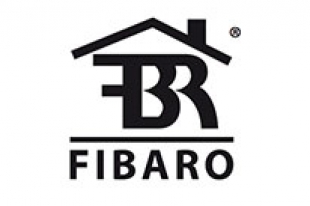
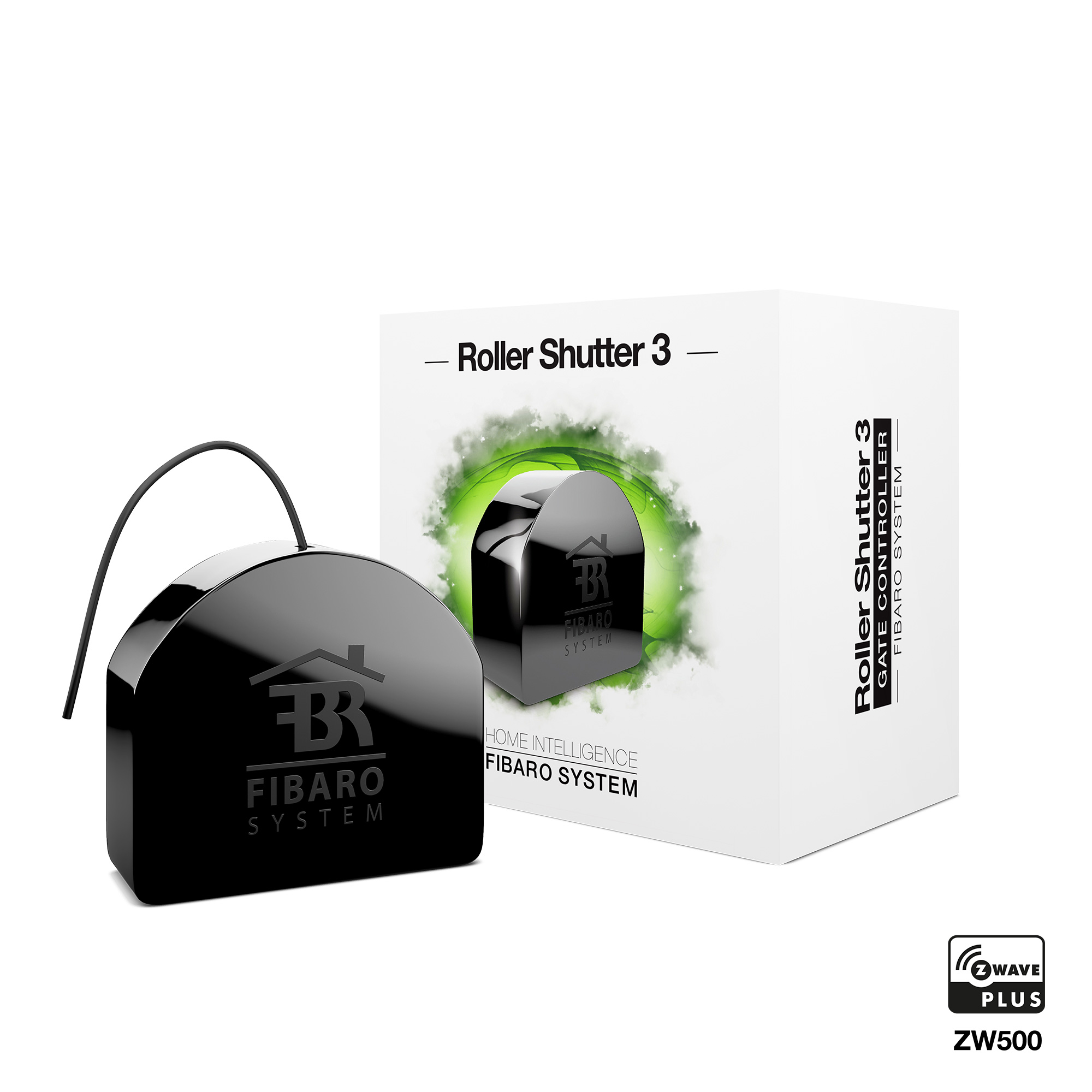
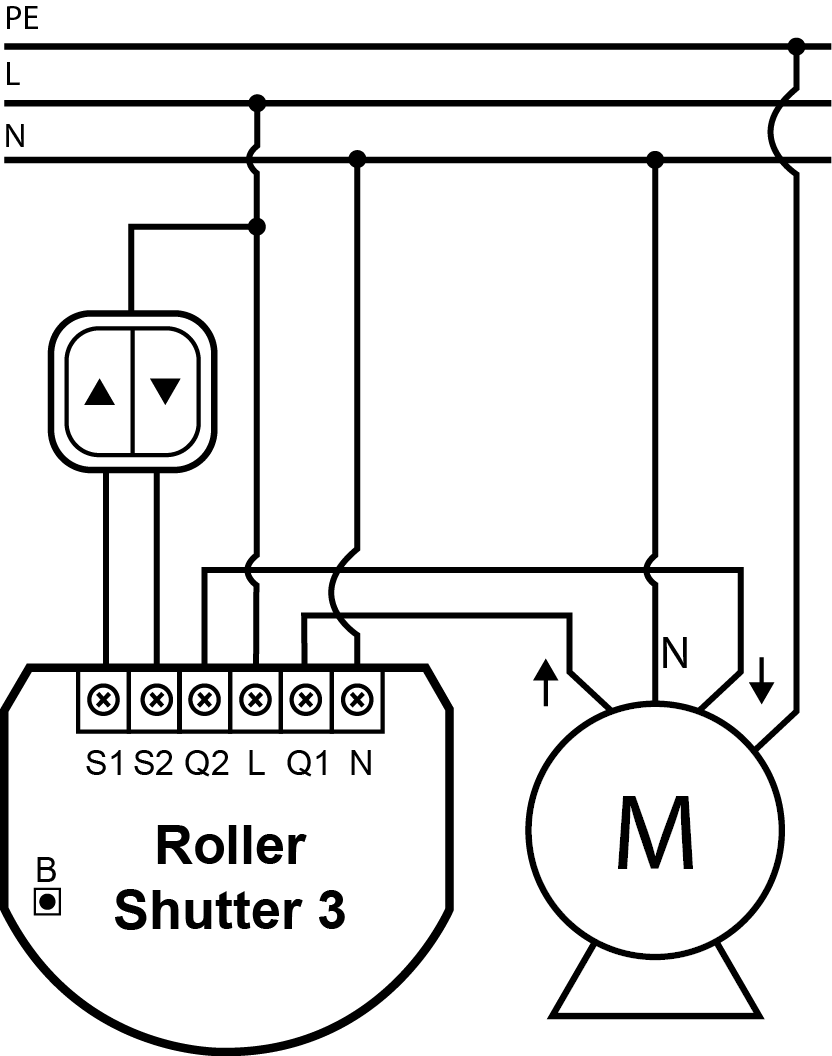
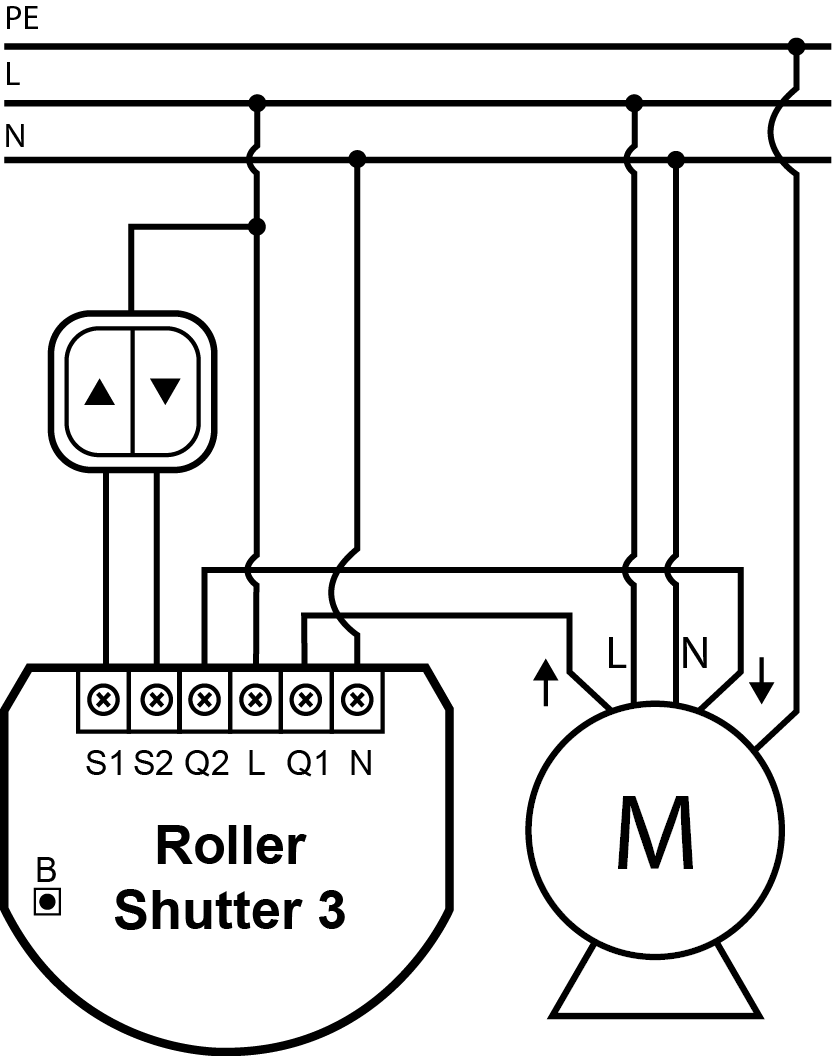 Installation of gate motors
Installation of gate motors